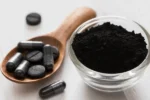How to care for succulents is a question that many indoor plant enthusiasts often ask. Succulents are low-maintenance, water-storing plants that come in a wide variety of shapes, sizes, and colors.
But despite their hardy reputation, they do require proper care to thrive indoors. In this guide, you will learn everything you need to know about succulent care, including essential tips to keep your succulent plants healthy and beautiful.
Succulents are perfect for both beginners and experienced gardeners because of their resilience and beauty. But while they may seem nearly indestructible, they can suffer from neglect or improper care, especially when kept indoors.
This is why understanding the basics of succulent care is essential for anyone looking to cultivate them successfully.
What Are Succulents?
Succulents are a type of plant known for their thick, fleshy leaves that store water. This unique adaptation allows them to thrive in arid conditions, making them ideal for indoor environments where watering may be infrequent.
Common succulent varieties include aloe vera, jade plant, echeveria, and cactus. Understanding what a succulent is and how it grows is the first step in mastering succulent care.
These hardy plants belong to a diverse range of plant families, with over 60 different plant families containing succulent species.
This means that while succulents share certain traits, such as water-storing leaves, they can vary widely in appearance, size, and color.
Succulents are native to a variety of environments, from the deserts of North America to the mountainous regions of Africa.
Their ability to store water in their leaves, stems, or roots is what makes them so well-suited to dry conditions, but it also means they have specific needs when grown indoors.

Types of Succulents
There are hundreds of different types of succulents, each with unique shapes, colors, and care needs. Some popular types include:
1. Aloe Vera: Known for its soothing gel, which is great for burns. Aloe is a popular house plant due to its medicinal properties and easy care. It thrives in bright, indirect sunlight and requires minimal watering.
2. Jade Plant: A popular indoor succulent with thick, round leaves that are often a deep, glossy green. Jade plants are known for their longevity and are sometimes called “money plants” because they are believed to bring good fortune.
3. Echeveria: A rosette-shaped succulent that comes in a range of colors, including green, pink, purple, and blue. Echeverias are perfect for decorative arrangements and require well-draining soil.
4. Cactus: Technically a type of succulent that stores water in its thick stems. There are thousands of cactus species, ranging from tiny, delicate varieties to large, towering types that can grow several feet tall.
Other popular succulents include string of pearls, haworthia, and agave. Each type has slightly different care requirements, so it’s important to identify the type you have and tailor your care routine accordingly.
Whether you choose to grow just one type of succulent or start a collection, understanding the differences between them will help you provide the best care possible.
How to Care for Succulents
1. Choose the Right Pot for Your Succulent
One of the most crucial steps in learning how to care for succulents is selecting the right pot. Succulents thrive in containers that provide proper drainage because water retention can lead to root rot.
Pots made from porous materials like terracotta or unglazed ceramic are ideal as they allow moisture to evaporate. Avoid plastic pots as they can trap moisture, creating an environment unsuitable for succulent plants.
Size matters when choosing a pot for your succulents. A pot that is too large can cause excess soil to retain moisture, which is detrimental to succulent care.
On the other hand, a pot that is too small can hinder root development, affecting plant health. Ideally, the pot should be just slightly larger than the root ball of your succulent.
Drainage holes at the bottom of the pot are essential for succulent maintenance. These holes ensure that excess water escapes, reducing the risk of waterlogging.
If your chosen pot doesn’t have drainage holes, you can drill some or place a layer of rocks at the bottom to improve drainage.
Additionally, using a saucer under the pot can help catch excess water, protecting indoor surfaces.
However, always remember to empty the saucer after watering to prevent stagnant water from soaking back into the soil. Choosing the right pot sets the foundation for successful succulent care indoors.
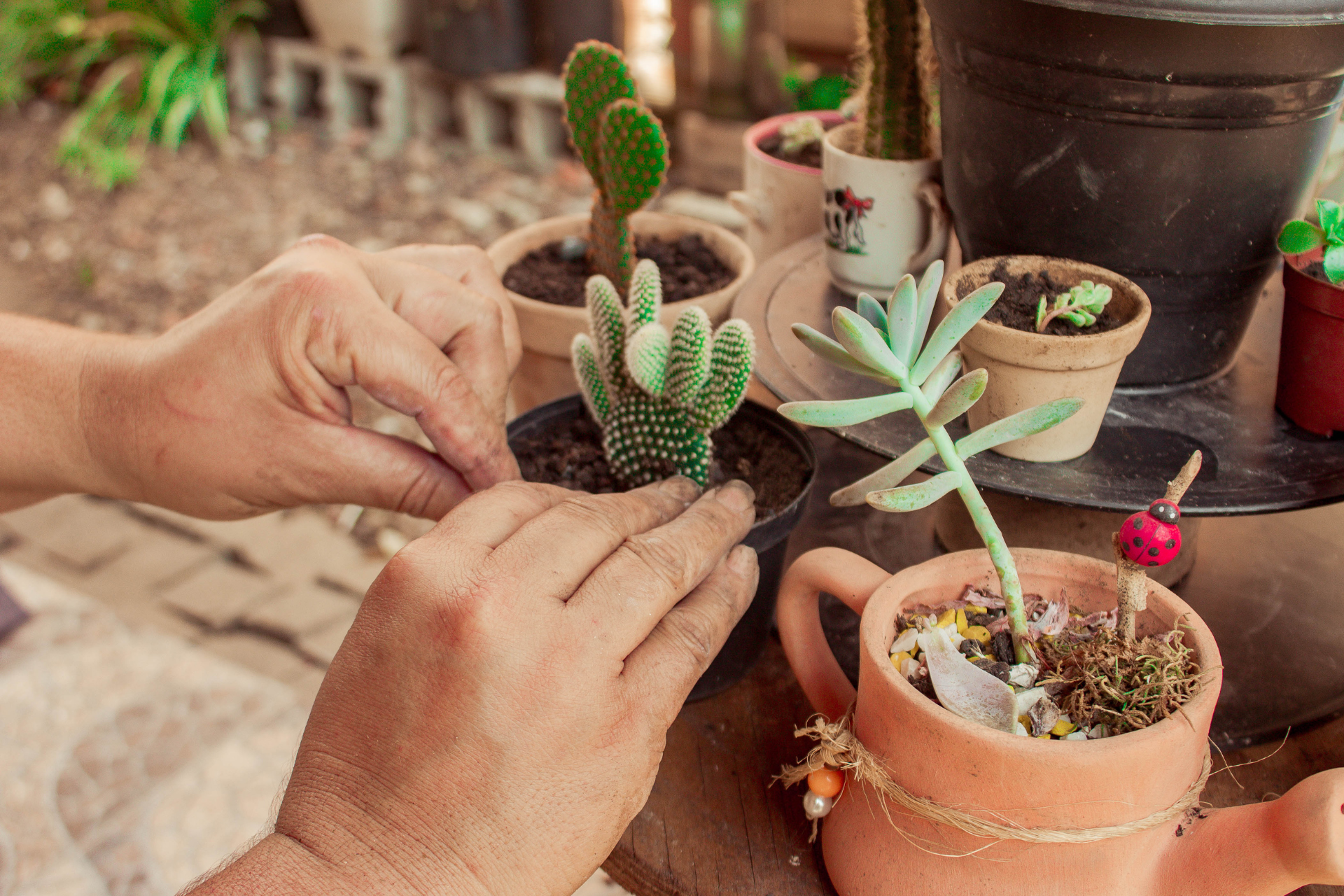
2. Use Well-Draining Soil
The type of soil used plays a significant role in succulent care. Standard potting soil retains too much moisture, which can be fatal for succulents.
Instead, opt for a specialized succulent or cactus mix designed to drain quickly and keep roots dry. These soils typically contain sand, perlite, or pumice, which improve aeration.
If you can’t find a succulent-specific mix, you can make your own. Combine regular potting soil with coarse sand and perlite in a 2:1:1 ratio.
This mixture mimics the arid environments that succulents naturally thrive in. Adding organic matter, like coconut coir, can also help retain minimal moisture without making the soil soggy.
Always test the soil before planting. Water it and observe how quickly it drains. If the soil remains wet for more than a day, it’s not suitable for succulents. Adjust the mixture as needed by increasing the proportion of sand or perlite.
Proper soil composition not only supports healthy root development but also prevents common issues like root rot. A well-draining soil mix is essential for maintaining your succulents’ long-term health.
3. Water Succulents Sparingly
Overwatering is the most common mistake when it comes to succulent care. Unlike typical house plants, succulents store water in their leaves, stems, and roots.
Therefore, they don’t need frequent watering. The best practice is to water thoroughly but infrequently. Wait until the soil is completely dry before watering again.
A good rule of thumb is the “soak and dry” method. Water the soil until it is fully soaked, allowing excess to drain out, and then wait for the soil to dry before watering again. Depending on your indoor environment, this could mean watering every two to three weeks.
Keep an eye on the plant’s appearance as well. If the leaves start to wrinkle or feel soft, the succulent may need more water.
Conversely, if the leaves turn mushy or translucent, this could indicate overwatering. Adjust your watering routine accordingly to maintain the right balance.
Using a moisture meter can be helpful in determining when to water. Succulents do best when allowed to dry out between waterings. This approach helps prevent rot and ensures the plant remains healthy.
4. Provide Adequate Light
Light is essential for succulents, but not all light is created equal. Succulents require bright, indirect light for about six hours a day.
Placing them near a south or east-facing window usually provides the right amount of sunlight. If natural light is limited, consider using a grow light to supplement.
Monitor your succulents for signs of light deficiency. If they start to stretch out or their leaves lose color, they may need more light.
On the other hand, if leaves develop sunburn marks or become crispy, they are receiving too much direct sunlight. Adjust the positioning accordingly to balance exposure.
Rotating your succulents every few weeks ensures even growth. Plants naturally grow towards the light, so turning them helps maintain symmetry. Lack of light can cause succulents to become leggy, which not only looks unattractive but also weakens the plant.
In winter, when daylight is shorter, succulents may enter dormancy and require less light. During this period, move them closer to windows or increase exposure to artificial lighting to maintain their health.
5. Maintain Optimal Temperature
Succulents generally thrive in temperatures ranging from 60°F to 80°F (15°C to 27°C). These conditions mimic their natural habitats, where daytime warmth is followed by cooler nights.
Keeping succulents indoors makes it easier to maintain this temperature range, but be cautious of drafts and sudden temperature changes.
If you live in a colder climate, avoid placing succulents near windows during winter, as cold drafts can damage the plants.
Similarly, do not place them near heating vents, as excessive dry heat can dehydrate the leaves. Aim to keep your succulents in stable environments without sudden temperature fluctuations.
During summer, ensure that your succulents are not exposed to intense, direct sunlight for prolonged periods. Excessive heat can scorch the leaves, leading to irreversible damage. Consider using sheer curtains to filter harsh sunlight while still providing ample light.
Temperature stress can cause succulents to lose leaves or change color. If you notice such signs, assess their environment and make adjustments. Succulents are resilient, but maintaining optimal temperatures is key to their well-being.
6. Fertilize Succulents Sparingly
While succulents are known for their low-maintenance nature, they can still benefit from occasional feeding. However, knowing how to care for succulents means understanding that they do not require as much fertilizer as typical house plants.
A diluted, balanced, water-soluble fertilizer applied once or twice a year is usually enough. Fertilize succulents during their active growing season, which is typically spring and summer.
Avoid fertilizing in the winter when the plants are dormant, as this can cause weak, spindly growth. Always use a fertilizer specifically designed for succulents or cacti to prevent overfeeding.
When applying fertilizer, dilute it to half the recommended strength to avoid chemical burns. Pour the diluted solution directly into the soil, avoiding the leaves, which can become damaged by direct contact with fertilizer. Over-fertilization can cause succulents to grow too quickly, resulting in weak, elongated stems.
If you prefer an organic approach, use a slow-release organic fertilizer or a light layer of compost. This provides nutrients gradually without overwhelming the plants.
Remember, less is more when it comes to fertilizing succulents. Healthy, well-established succulents often need minimal feeding to thrive.
7. Prune Succulents Regularly
Pruning is an essential aspect of succulent care that promotes healthy growth and keeps your plants looking their best. Regular pruning helps maintain shape, removes dead leaves, and prevents overcrowding, which can attract pests. Start by using clean, sharp scissors or pruning shears to avoid damaging the plant.
Begin by removing any dried or dead leaves at the base of the succulent. These leaves not only make the plant look untidy but can also harbor pests or fungi.
Gently pull them away or cut them off. Be careful not to damage healthy leaves or stems in the process.
For succulents that have become too tall or leggy, pruning can help them regain their compact shape. Cut back the tall stems, leaving a few inches above the base. The cuttings can be used to propagate new plants, making pruning a great way to expand your succulent collection.
After pruning, give the plant some time to heal. Avoid watering immediately after pruning to prevent bacterial infections.
Instead, allow the cut surfaces to dry and form calluses, which protect the plant from rot. Regular pruning is a simple but powerful way to maintain beautiful, healthy succulents.
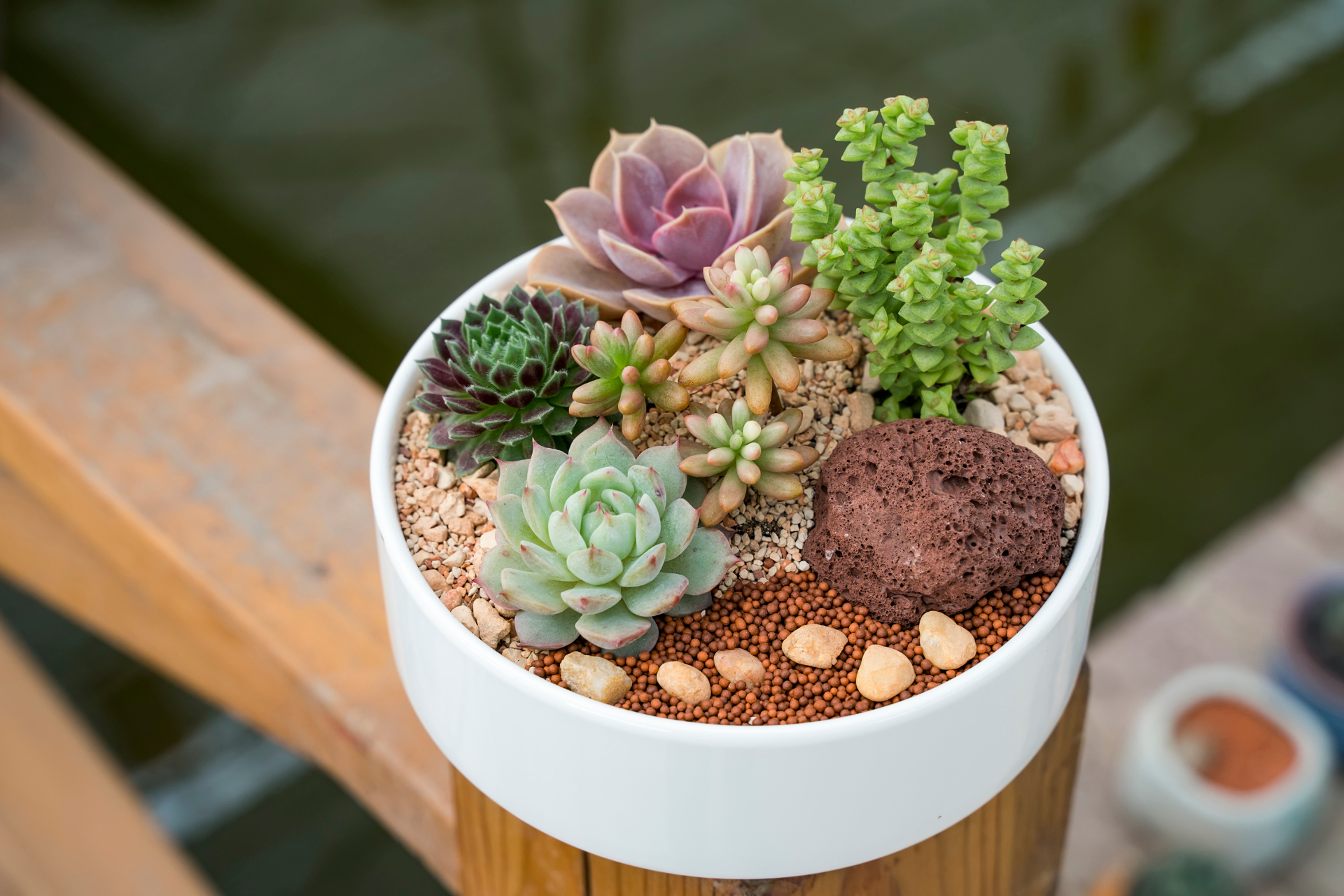
8. Rotate Succulents for Even Growth
Succulents are naturally drawn to light, and if left in the same position, they may start to lean toward the light source, creating an uneven appearance. To maintain a balanced, symmetrical shape, rotate your succulents regularly. A quarter-turn every week or two is often enough.
This simple practice ensures that all sides of the succulent receive equal exposure to sunlight. Not only does this keep the plant looking well-proportioned, but it also prevents the shaded side from becoming weak or pale.
Light-starved leaves may lose their vibrant colors or become stretched out, a condition known as etiolation.When rotating, pay attention to the light intensity.
If one side of the succulent is more sensitive due to previous shading, introduce it gradually to brighter light. This prevents sudden sunburn, which can cause irreversible leaf damage.
Rotating your succulents is especially important for plants in indirect light or those placed under grow lights. It ensures even exposure, leading to healthier, more attractive plants. Consistent rotation is a simple but effective succulent care practice.
9. Protect Succulents from Pests
Although succulents are generally hardy, they are not immune to pests. Common pests that affect succulents include mealybugs, aphids, spider mites, and fungus gnats. Recognizing the signs of an infestation early is crucial for effective succulent care.
Mealybugs appear as tiny white, cotton-like clumps on leaves and stems. Aphids are small, soft-bodied insects that often cluster on new growth, while spider mites leave tiny web-like structures on plants. Fungus gnats are small, black flies that lay eggs in moist soil.
To prevent pests, maintain good air circulation around your succulents and avoid overwatering, which can create a breeding ground for fungus gnats. Regularly inspect your plants for signs of pests and act quickly if you notice an infestation.
If you spot pests, isolate the affected plant and treat it with a natural pesticide like neem oil or rubbing alcohol. Use a cotton swab dipped in alcohol to dab directly on pests.
For severe infestations, consider replacing the soil to remove any hidden pests. Consistent monitoring is key to pest-free succulent care.
10. Maintain Proper Humidity Levels
Succulents are native to arid regions, which means they prefer low humidity. Excess humidity can cause succulent plants to retain moisture, leading to rot and fungal infections. Ideally, indoor humidity should be kept below 50% for succulents.
If you live in a humid area, consider using a dehumidifier to maintain proper moisture levels. Alternatively, placing succulents in a well-ventilated room with good air circulation can help reduce humidity. Avoid placing succulents in bathrooms or kitchens, where steam and moisture are common.
Terrariums and glass containers can trap humidity, making them unsuitable for most succulents. If you want to display succulents in a terrarium, ensure it is open or has sufficient ventilation. This allows excess moisture to escape, protecting your plants.
Signs of excess humidity in succulents include mushy leaves, a sour smell from the soil, and mold growth. If you notice these symptoms, relocate your plants to a drier area and allow the soil to dry out completely before watering again. Controlling humidity is a crucial part of how to care for succulents indoors.
11. Avoid Overcrowding Succulents
One of the most common mistakes in succulent care is overcrowding. While succulents may look attractive when arranged closely together, this can lead to several problems. Crowded succulents compete for light, water, and nutrients, which can result in stunted growth and weak plants.
Overcrowding also increases the risk of pests and diseases spreading between plants. If one succulent develops a pest infestation, the close proximity allows pests to move quickly to neighboring plants. Similarly, fungal infections can spread through shared soil if plants are too close.
To avoid overcrowding, ensure each succulent has enough space to grow. When planting succulents in a container, leave about an inch or two between each plant.
This spacing provides adequate airflow, reducing the risk of mold and fungal growth. For larger succulents, such as Echeverias or Aloe Vera, even more space may be needed.
If you notice that your succulents are becoming too crowded, consider repotting them into separate containers. This not only improves their health but also gives you the opportunity to create new arrangements and expand your succulent collection. Proper spacing is a simple but powerful aspect of succulent care.
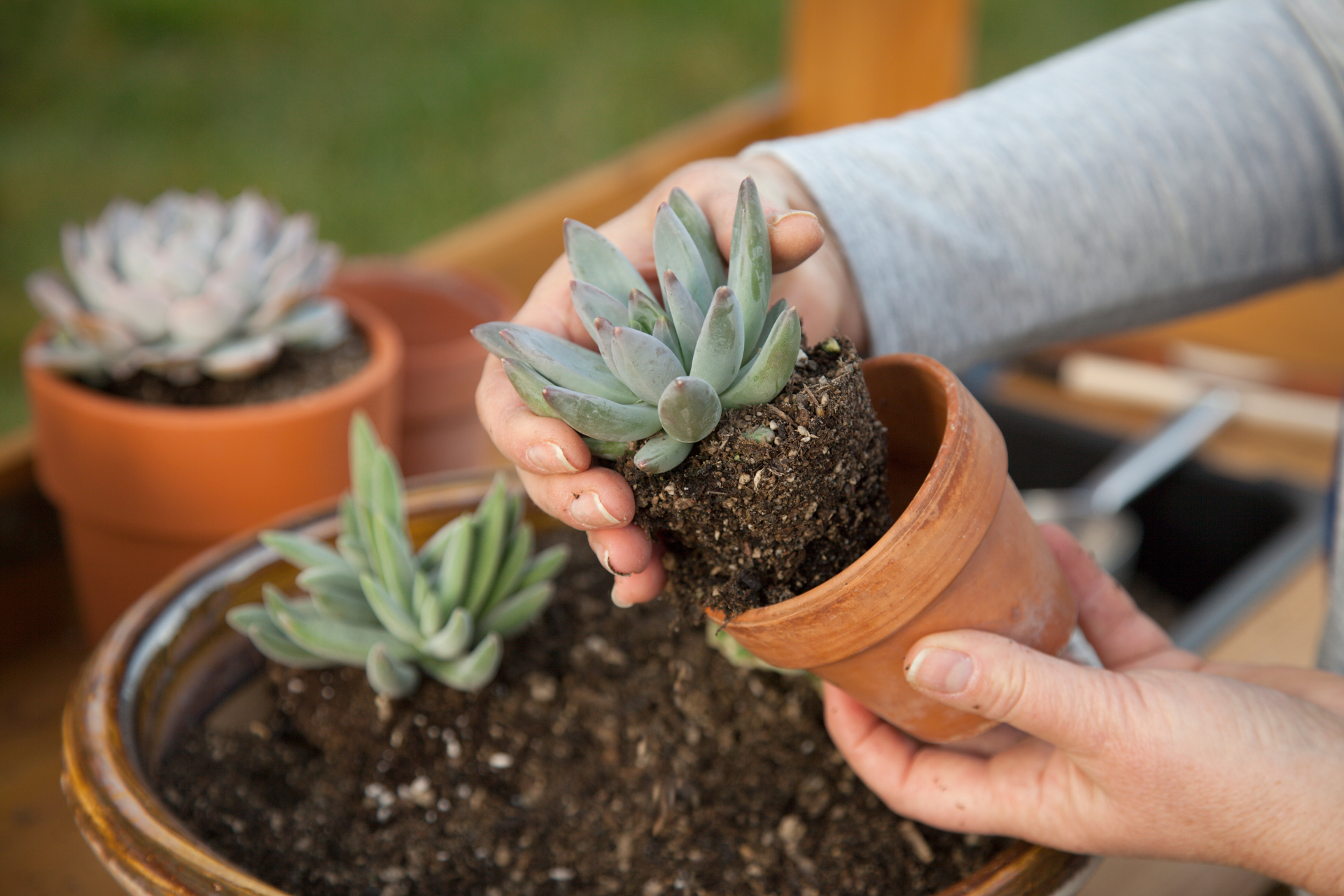
12. Clean Succulents Regularly
Dust can accumulate on succulent leaves over time, blocking light and reducing photosynthesis. Regular cleaning is an essential part of how to maintain succulents, ensuring that they continue to thrive.
The best way to clean succulents is with a soft brush, like a small paintbrush or a makeup brush, which can gently remove dust without damaging the leaves.
Avoid using water directly on the leaves to clean them, especially for fuzzy succulents like Kalanchoe tomentosa (Panda Plant) or Echeveria setosa.
Excess moisture can become trapped in the tiny leaf hairs, leading to rot. Instead, gently dust the leaves or use a damp cloth to wipe smooth-leaved varieties.
In addition to cleaning the leaves, check for dead or dried leaves at the base of the plant. Removing these helps prevent pests like mealybugs, which are attracted to decaying plant matter. Always clean your succulents in a well-ventilated area, allowing any remaining moisture to evaporate quickly.
13. Monitor for Sunburned Leaves
While succulents love bright light, they can also suffer from sunburn if exposed to intense direct sunlight for too long. Signs of sunburn include brown, crispy patches on the leaves or bleached, pale areas. Understanding how to care for succulents means recognizing these symptoms and acting quickly.
If you notice sunburn on your succulents, move them to a location with bright, indirect light instead. East-facing windows are ideal because they provide morning sunlight, which is less intense than the harsh afternoon sun. If you must keep your succulents in direct sunlight, consider using sheer curtains to filter the light.
Preventing sunburn is easier than treating it. Gradually acclimate your succulents to brighter light, especially if they were previously in a shaded area.
Start by exposing them to a few hours of direct sunlight each day, gradually increasing the duration over a week. This allows the plant to adapt without shock.
If a succulent is severely sunburned, consider removing the damaged leaves, especially if they are dry and crispy. However, avoid excessive pruning as this can stress the plant. With proper care, new healthy leaves will eventually grow, and your succulent will recover.
14. Avoid Excessive Handling of Succulents
Succulents are generally hardy, but their leaves are not as resilient as they look. Frequent handling can cause leaves to become damaged, bruised, or even detached. This is especially true for delicate varieties like Echeveria or Sedum, whose leaves can fall off at the slightest touch.
To minimize handling, ensure your succulents are placed in a stable location where they won’t be accidentally knocked over. When moving or repositioning them, always hold the pot rather than the plant itself. This prevents unnecessary pressure on the leaves and stems.
If you must handle your succulents, such as during repotting, use gloves to protect both your hands and the plant. For small, delicate succulents, consider using tongs or chopsticks for precision. Be mindful of the plant’s natural shape and avoid pressing down on the leaves.
Avoiding excessive handling also reduces the risk of transferring oils or dirt from your hands onto the leaves. This is particularly important for succulents with powdery coatings, like Graptopetalum, whose natural protective layer can be easily wiped away. Keeping handling to a minimum is a simple but effective succulent care practice.
15. Propagate Succulents Properly
Succulent propagation is one of the most rewarding aspects of succulent care. Many succulents can be propagated from leaves, cuttings, or offsets, allowing you to grow new plants for free. However, successful propagation requires proper techniques.
For leaf propagation, gently twist a healthy leaf from the parent plant, ensuring it comes off cleanly without breaking. Allow the leaf to air dry for a few days until the cut end forms a callus.
This step is crucial, as planting a fresh leaf without a callus can lead to rot. Once callused, place the leaf on well-draining soil without burying it. Mist lightly every few days until roots develop.
Stem cuttings are another popular method, especially for succulents like Aeonium or Crassula. Cut a healthy stem, allow it to callus, and then plant it in well-draining soil. Water sparingly until the cutting establishes roots. Keep the cutting in bright, indirect light to encourage growth.
Offsets are small baby succulents that grow around the base of the parent plant. Gently separate these and plant them in their own pots.
Propagation not only expands your collection but also helps rejuvenate mature succulents that may have become leggy or overgrown. With proper technique, propagation can be an easy and enjoyable part of succulent care.
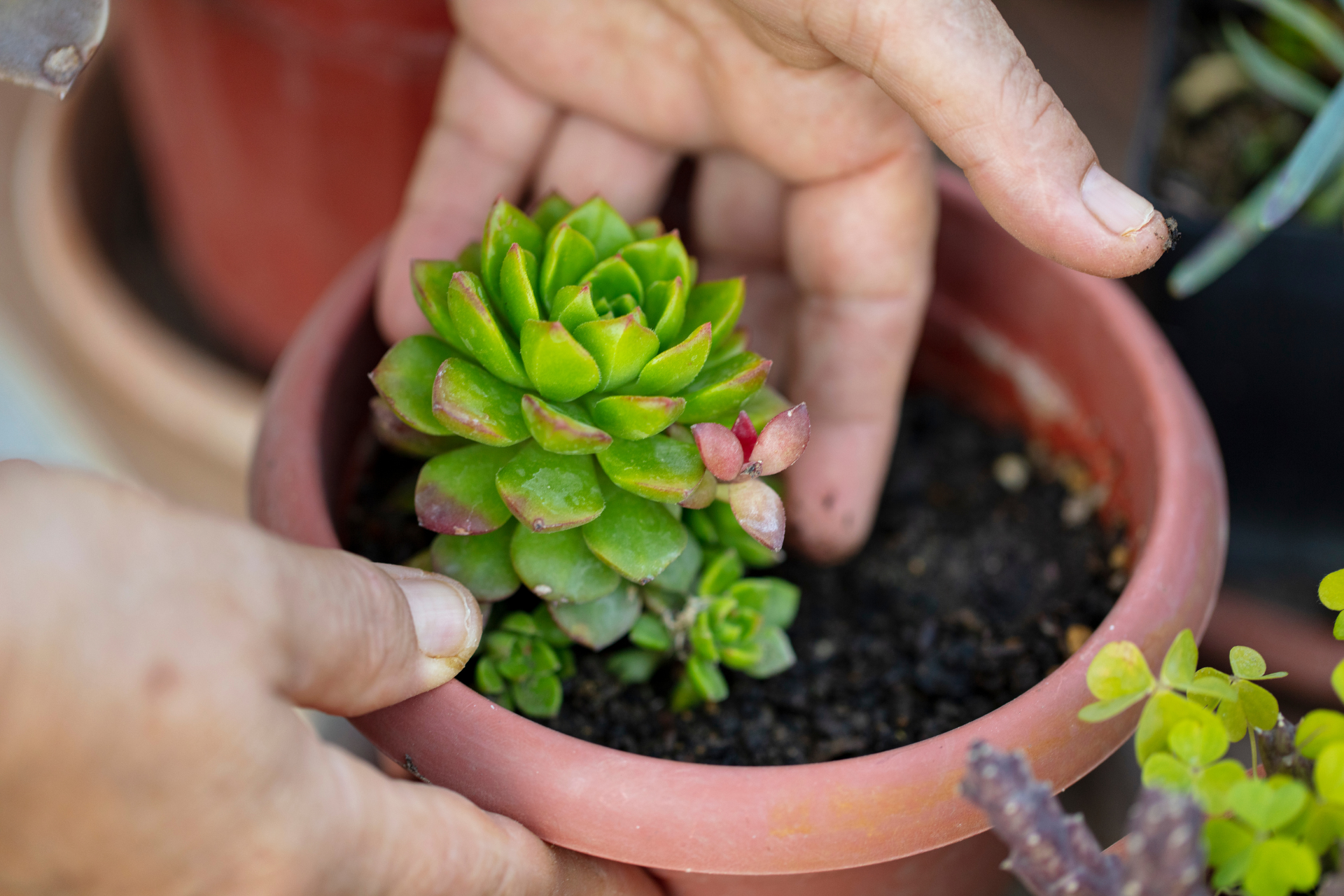
16. Acclimate New Succulents Gradually
Bringing new succulents into your home can be exciting, but it’s essential to acclimate them properly. Sudden changes in light, temperature, or humidity can shock succulents, leading to leaf drop, discoloration, or even death. Knowing how to care for succulents means taking time to help them adjust to their new environment.
Start by placing the new succulent in a shaded or partially shaded area for a few days, even if it is a sun-loving variety. Gradually introduce it to brighter light over the course of a week. This slow transition prevents sunburn, especially if the plant was previously kept in low light at the store.
Monitor the succulent for signs of stress, such as wilting, browning, or leaf dropping. If you notice any of these signs, reduce light exposure or move the plant to a more stable environment. Remember, each succulent species has different light requirements, so adjust accordingly.
17. Use Pebbles or Gravel as Top Dressing
Top dressing is not just a decorative touch for succulents—it also has practical benefits. A layer of pebbles, gravel, or crushed rocks on top of the soil helps prevent soil displacement during watering. This keeps the base of the succulent clean and minimizes the risk of fungal infections caused by wet soil contact.
Top dressing also reduces evaporation, which can be especially helpful in dry indoor environments. This means the soil retains moisture for longer, providing a consistent environment for the succulent’s roots. Choose top dressing that is lightweight and well-draining, like pumice, aquarium gravel, or decorative pebbles.
For aesthetic purposes, top dressing can enhance the appearance of your succulent arrangements. Choose colors and textures that complement the succulent’s natural look. However, avoid using top dressing that is too thick or dense, as this can block airflow to the soil and trap moisture.
When repotting succulents, always refresh the top dressing. Remove the old layer, which may have accumulated dust or salts from fertilizer, and replace it with a fresh, clean layer. This keeps your succulent display looking pristine while supporting healthy growth.
18. Keep Succulents Away from Drafts
Succulents may be hardy, but they are sensitive to sudden temperature changes caused by drafts. Cold drafts from windows, doors, or air conditioning vents can stress succulents, leading to leaf drop or discoloration. Understanding how to care for succulents means providing them with a stable environment.
During winter, avoid placing succulents near drafty windows, as the cold air can cause frost damage, especially at night. Use thick curtains to block drafts or relocate your succulents to a warmer spot in the room.
In summer, be cautious of air conditioning vents that may blow cold, dry air directly onto your succulents. This can cause them to lose moisture too quickly, leading to shriveled leaves. Position succulents away from these vents, or use a room divider to shield them from direct airflow.
If you must place succulents near a window, ensure it is well-sealed, and consider using a sheer curtain to reduce cold drafts. Stable, consistent temperatures are key to maintaining healthy, happy succulents.
19. Avoid Frequent Repotting
Unlike many house plants, succulents do not need frequent repotting. In fact, they often prefer being slightly root-bound, which mimics their natural habitat. Repotting too often can stress succulents, causing them to lose leaves or suffer from transplant shock.
As a general rule, repot succulents only when they outgrow their current pot or if the soil has become compacted and no longer drains properly.
For most succulents, this means repotting every two to three years. When repotting, choose a pot that is only slightly larger than the plant’s root ball.
Use fresh, well-draining succulent soil when repotting, and avoid watering immediately after the transplant. Give the plant a few days to adjust to its new environment before resuming the normal watering schedule. This allows the roots to recover without the risk of rot.
When repotting, inspect the roots for signs of rot or pests. Trim away any damaged roots with clean scissors, and allow the cuts to callus before planting. Properly timed and careful repotting is an essential part of succulent care.
20. Respect Dormancy Periods
Many succulents have natural dormancy periods, usually during the colder months. Understanding and respecting this dormancy is an important aspect of succulent care. During dormancy, succulents grow more slowly, and their water and light requirements decrease.
Overwatering during dormancy can be harmful, as the plants are not actively absorbing water. Instead, water sparingly, allowing the soil to dry out completely between waterings. In some cases, watering may only be necessary once a month.
Light requirements may also change during dormancy. While succulents still need light, they may not need as much direct sunlight as they do during the growing season. Placing them in bright, indirect light is usually sufficient.
Some succulents, like Aloe Vera and Kalanchoe, are summer-dormant, while others, like Echeveria, are winter-dormant. Research your succulent species to understand their specific dormancy periods and adjust your care routine accordingly. Respecting dormancy helps your succulents conserve energy and emerge healthy when the growing season returns.
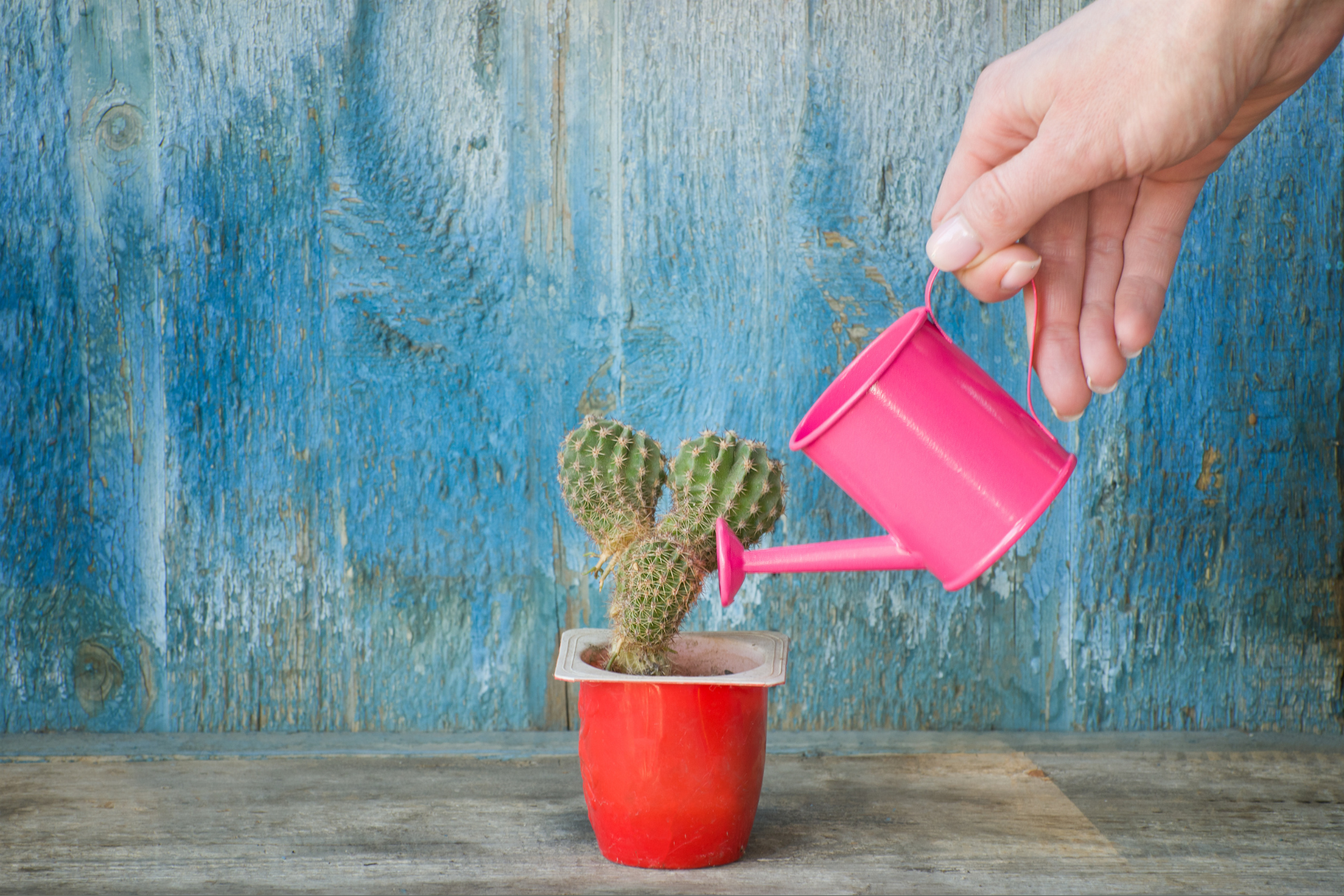
How and When to Water Succulents
Watering succulents is a delicate balance between providing enough moisture for growth and avoiding the risk of root rot. The most effective method is the “soak and dry” technique, where you water the soil thoroughly until water drains from the bottom of the pot, then allow the soil to dry out completely before watering again.
Succulents prefer this method because it mimics their natural habitat, where they experience periods of rain followed by dry conditions.
How often you water your succulents depends on several factors, including the size of the plant, the type of soil, the pot’s drainage, and the indoor climate.
In warmer months, succulents may need watering every one to two weeks, while in colder months, they may only require watering once a month.
Always check the soil before watering—if it is dry at least two inches below the surface, it is time to water. A moisture meter can be a helpful tool to ensure accurate watering.
Watering succulents from the bottom, where the pot absorbs water through the drainage holes, can also be an effective technique, especially for compact arrangements.
Avoid getting water on the leaves, as this can cause mold or rot, particularly in succulents with dense rosettes like Echeveria. Proper watering is the foundation of succulent care, ensuring your plants stay healthy without the risk of overwatering.
Best Soil for Succulents in Pots
1. Choose Well-Draining Soil
The most critical aspect of soil for succulents is drainage. Regular garden soil or standard potting soil retains too much moisture, which can cause root rot in succulents.
Instead, opt for a specialized succulent or cactus mix, which is designed to drain quickly and prevent water from pooling around the roots. These mixes typically contain sand, perlite, or pumice, which improve aeration and drainage.
If you can’t find a commercial succulent mix, you can create your own. Combine two parts of regular potting soil with one part coarse sand and one part perlite or pumice.
This mixture mimics the arid conditions succulents prefer and allows water to flow freely. Always test your soil mix by watering it—if it dries out within a day, it is suitable for succulents.
Proper soil not only supports healthy root growth but also helps prevent common issues like root rot and fungal infections. When repotting succulents, always refresh the soil with a new, well-draining mix to ensure the plants receive the best growing conditions.
2. Avoid Moisture-Retaining Additives
Many standard potting soils contain moisture-retaining additives like peat moss, which can be harmful to succulents. These ingredients are excellent for most house plants but hold too much water for succulents, creating an environment that encourages rot. For succulent care, avoid soils with these additives or use them only in minimal amounts.
If you purchase a pre-mixed succulent soil, read the label carefully to ensure it does not contain water-retentive components.
Some cactus mixes may still have small amounts of peat moss, but these should be balanced with high levels of perlite or sand to maintain drainage. When in doubt, mix your own soil to control the composition.
Understanding what your soil contains is essential for proper succulent care. By avoiding moisture-retentive ingredients, you protect your succulents from overwatering and ensure they thrive in their pots.
3. Refresh Soil Every Few Years
Over time, even the best succulent soil can become compacted or lose its ability to drain properly. Regularly refreshing the soil is an important part of succulent care.
For most succulents, repotting and refreshing the soil every two to three years is sufficient. This process not only improves drainage but also replenishes essential nutrients.
When refreshing soil, gently remove the succulent from its pot, carefully brushing away old soil from the roots. Inspect the roots for signs of rot or pests, and trim any damaged areas with clean scissors. Use fresh, well-draining soil in the new pot, ensuring it is lightly packed without becoming too dense.
Regularly updating the soil helps maintain a healthy root environment, preventing compacted, waterlogged conditions that can lead to rot. It also gives you the opportunity to check the plant’s health and make any necessary adjustments to your care routine.
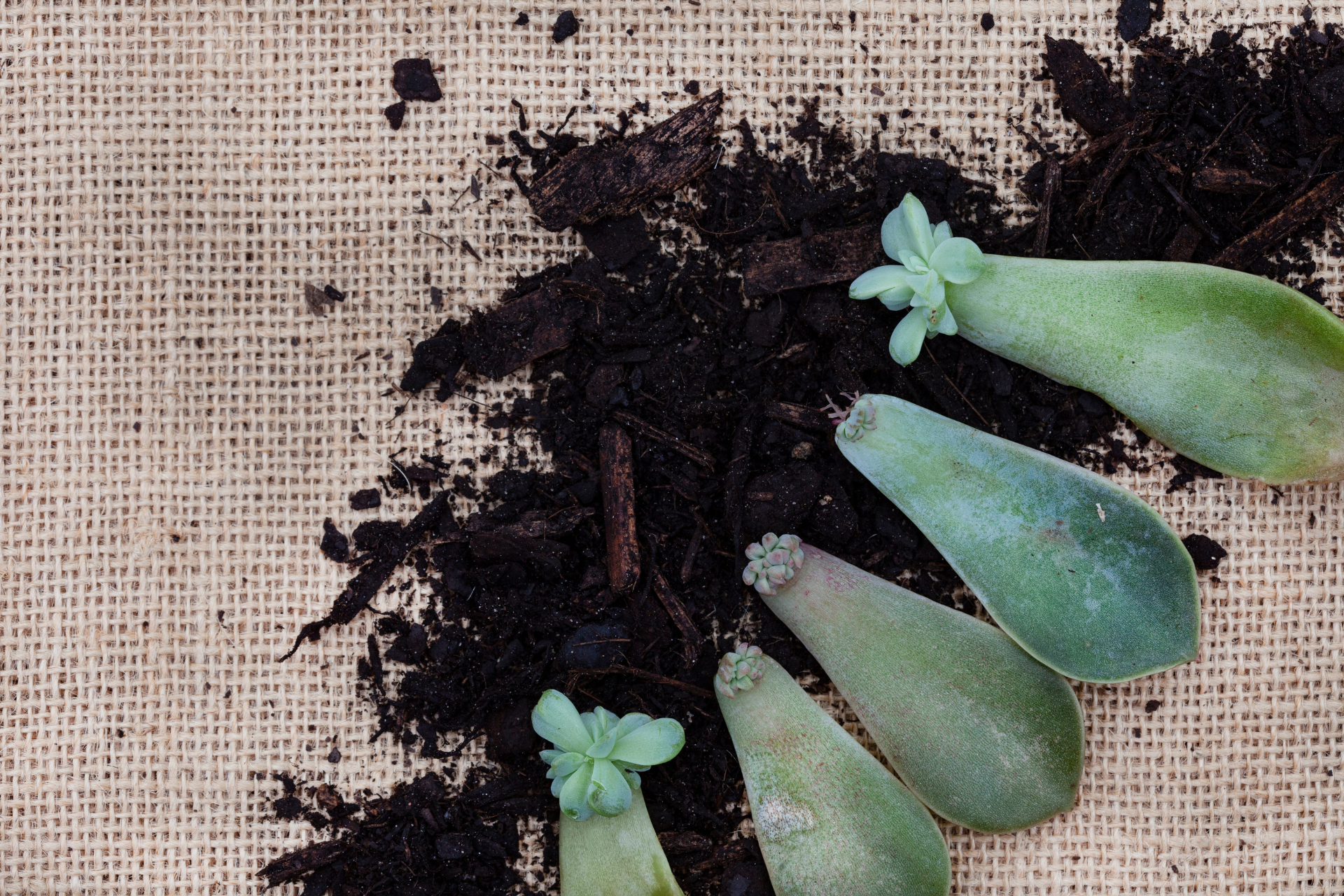
How to Prevent Succulent Pests and Diseases
Preventing pests and diseases in succulents begins with maintaining a clean and healthy growing environment. Regularly remove dead leaves from the base of the plant, as these can attract pests like mealybugs and aphids.
Use a soft brush to clean dust from the leaves, ensuring they can photosynthesize efficiently. Good airflow around your succulents also helps prevent mold and fungal growth.
Inspect your succulents frequently for signs of pests, such as white cottony clumps (mealybugs), sticky residue (aphids), or tiny webs (spider mites).
At the first sign of pests, isolate the affected plant to prevent the infestation from spreading. Treat pests with a natural solution like diluted rubbing alcohol or neem oil, applying it directly to the affected areas with a cotton swab.
Overwatering is a common cause of fungal infections in succulents. To prevent this, ensure your soil drains well and that the pot has drainage holes.
If you notice yellowing leaves, black spots, or a foul odor, these may be signs of root rot. Remove the plant from its pot, trim any rotten roots, and replant it in fresh, dry soil. Consistent monitoring and proper care are key to keeping your succulents pest-free.
How to Propagate Succulents
Propagating succulents is a simple and rewarding process that allows you to grow new plants from leaves, stem cuttings, or offsets.
To propagate from leaves, gently twist a healthy leaf from the parent plant, ensuring it comes off cleanly without breaking.
Allow the leaf to air dry for a few days until it forms a callus, which prevents rot. Once callused, place the leaf on well-draining soil without burying it, and mist lightly until roots develop.
Stem propagation is another effective method, especially for tall succulents like Aeonium or Crassula. Cut a healthy stem, allow it to callus, and plant it in well-draining soil.
Water sparingly until roots form, then gradually increase watering as the plant becomes established. Stem propagation is an excellent way to revive leggy succulents.
Some succulents, like Aloe Vera and Haworthia, produce offsets or baby plants around the base. Simply separate these and plant them in their own pots. Propagation not only helps you expand your collection but also allows you to share your favorite succulents with friends.

How to Transplant Succulents
Transplanting succulents is necessary when they outgrow their pots or when their soil becomes compacted. Start by gently removing the succulent from its pot, taking care not to damage the leaves or roots.
Brush off excess soil from the roots and inspect for any signs of rot or pests. Trim any damaged roots with clean scissors.
Choose a new pot that is slightly larger than the root ball, ensuring it has drainage holes. Fill the pot with fresh, well-draining succulent soil, creating a small hole for the plant.
Place the succulent in the hole, gently covering the roots with soil without burying the leaves. Avoid packing the soil too tightly.
Allow the transplanted succulent to rest in a shaded area for a few days before watering. This gives the roots time to adjust without the risk of rot. After a week, resume your normal care routine. Proper transplanting ensures your succulents continue to thrive in their new space.
Tips for Growing Succulents Outside
1. Choose Suitable Varieties
Not all succulents are suitable for outdoor growth, especially in regions with cold winters. Hardy succulents like Sempervivum (Hens and Chicks), Sedum, and certain species of Agave are better suited for outdoor gardens. Research the hardiness of your succulents before planting them outside.
2. Provide Adequate Sunlight
Outdoor succulents require ample sunlight, but too much direct sunlight can cause sunburn. Place your succulents in a location where they receive morning sun and afternoon shade. Gradually acclimate them to brighter light to avoid sun damage.
3. Use Well-Draining Soil
Proper soil is essential for outdoor succulents. Mix native soil with sand or gravel to improve drainage. Raised beds or rock gardens are excellent options for outdoor succulent arrangements.
4. Water Sparingly
Even outdoors, succulents require minimal watering. Rely on natural rainfall when possible, and supplement only during prolonged dry periods. Ensure the soil dries completely between watering sessions.
5. Protect from Harsh Weather
During winter, protect outdoor succulents with frost cloths or bring potted succulents indoors. Excessive rain can also be harmful, so consider moving potted succulents to a sheltered area during storms.
How to Care for Succulents During Winter Months
Caring for succulents during winter requires a few adjustments to keep them healthy through the colder months. Most succulents enter a period of dormancy in winter, meaning their growth slows down significantly.
Because of this, reduce watering to once every three to four weeks, depending on your indoor humidity. Always ensure the soil is completely dry before watering to prevent root rot.
Light is another critical factor in winter succulent care. With shorter daylight hours, succulents may not receive enough natural light, leading to weak, stretched growth.
Place your succulents near a bright, south or east-facing window, or use a grow light to supplement their light needs. Rotate your plants every few weeks to ensure even light exposure.
Temperature control is also essential. Keep succulents in a room where temperatures range between 50°F and 60°F (10°C to 15°C).
Avoid placing them near drafty windows, heating vents, or fireplaces, as sudden temperature changes can cause stress. By adjusting your watering, light, and temperature management, your succulents can stay healthy all winter.
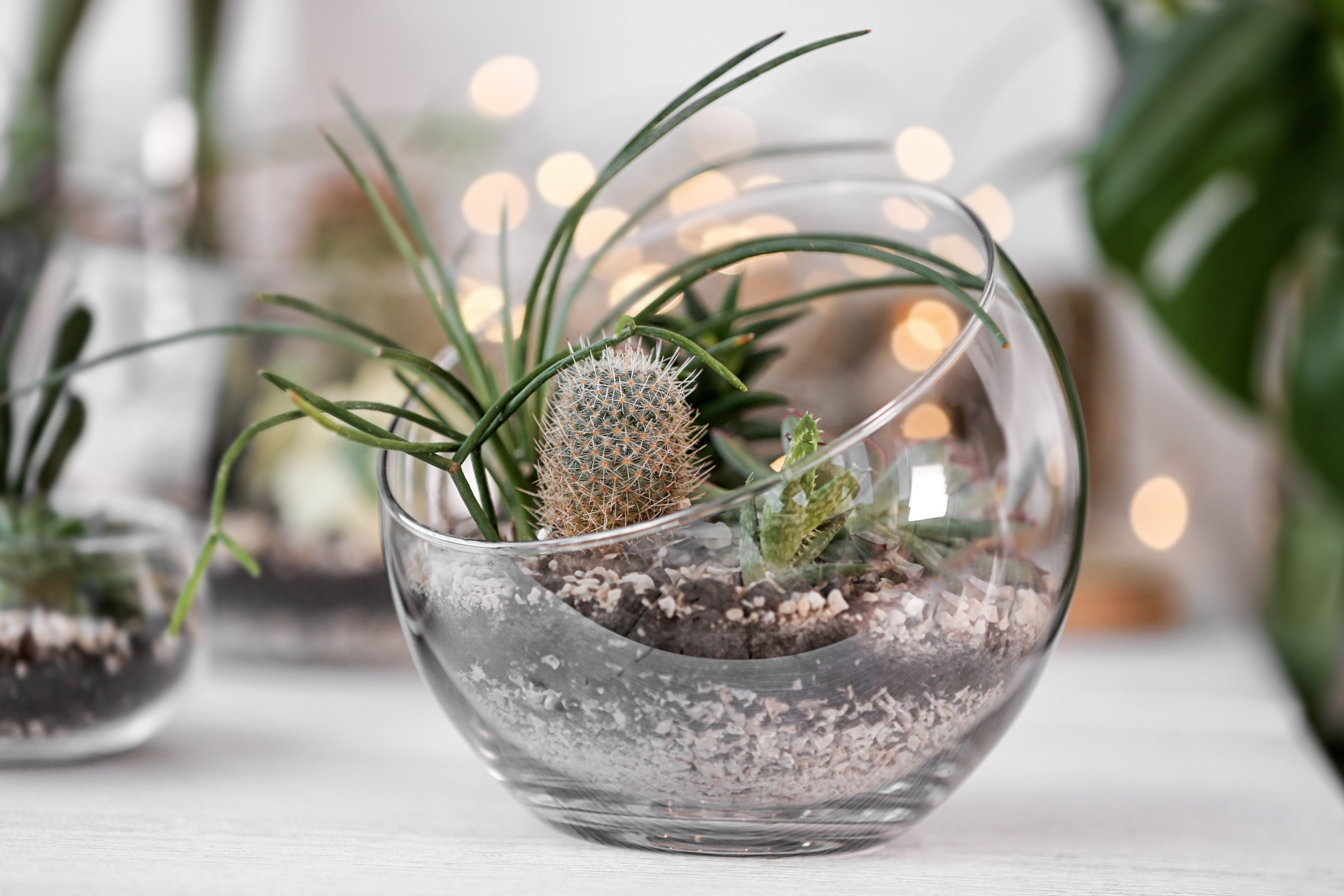
Displaying Succulents in a Terrarium
Displaying succulents in a terrarium is a popular and stylish way to showcase these unique plants. However, not all succulents thrive in closed terrariums because they need good airflow and low humidity. Open terrariums are ideal, allowing moisture to escape and providing the ventilation succulents require.
Start by choosing an open glass container and filling the bottom with a layer of small rocks or gravel to improve drainage. Add a layer of activated charcoal to prevent odors and bacteria, then top with well-draining succulent soil.
Arrange your succulents, leaving enough space between plants to allow airflow. For a decorative touch, add a layer of sand or decorative pebbles on top of the soil.
Water succulents in terrariums sparingly, using a spray bottle to lightly mist the soil rather than soaking it. Monitor your terrarium regularly for signs of excess moisture, mold, or pests.
Keep the terrarium in a bright, indirect light area, and rotate it occasionally to ensure even light exposure. With the right setup, a succulent terrarium can be a stunning and low-maintenance display.
Conclusion on How to Care for Succulents
Learning how to care for succulents is about understanding their unique needs and adapting your approach to match them.
From selecting the right soil and pot to adjusting your watering schedule and providing adequate light, each aspect of succulent care is crucial for keeping these beautiful plants healthy.
Succulents are resilient, but they thrive best with the right care. Remember to protect them from pests, maintain optimal temperature and humidity, and allow them to rest during their dormant periods.
For those who love experimenting, propagation offers a fantastic way to expand your collection.
Whether you’re a beginner or a seasoned plant enthusiast, succulents offer endless possibilities for indoor and outdoor displays.

